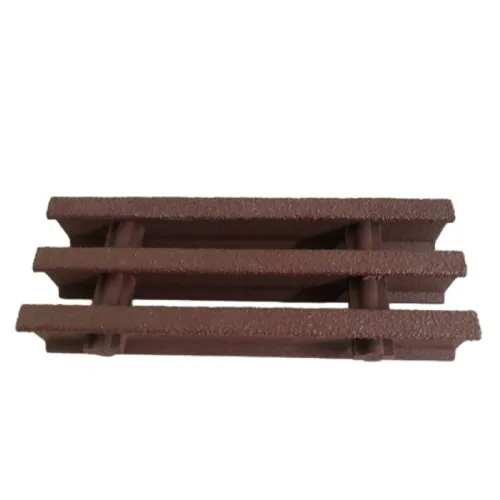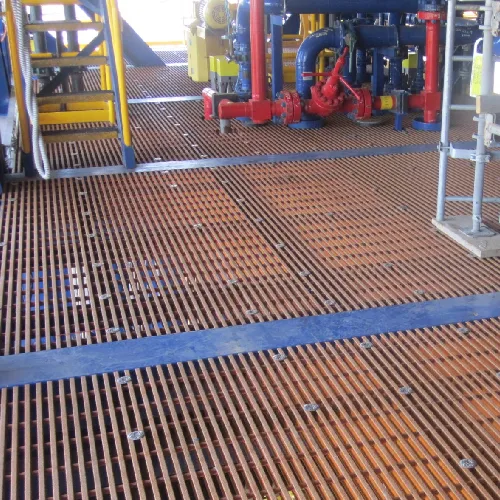loading...
- No. 9, Xingyuan South Street, Dongwaihuan Road, Zaoqiang County, Hengshui, Hebei, China
- admin@zjcomposites.com
- +86 15097380338
- Welcome to visit our website!
FRP Pultruded Gratings: High Strength, Anti-Slip—Why Us?
Insider’s Guide to FRP Pultruded Gratings: What’s Working in the Field
A lot of folks in plants and ports ask me why frp pultruded gratings keep popping up in specs lately. Short answer: corrosion and lifecycle cost. The longer story? Materials science finally caught up with the real world. The “Anti- Corrosion Cost Effective FRP Pultrusion Grating” from ZJ Composites, produced in Hebei, China, is a good case study—recessed tie bar design, rigid underfoot, and surprisingly easy to cut.

Market snapshot and why it matters
The shift from steel to frp pultruded gratings is accelerating in chemical processing, wastewater, desalination, food plants, and coastal infrastructure. Projects are chasing lower maintenance and faster installs—two areas where FRP typically wins. To be honest, many customers say they were skeptical until they ran a lifecycle cost model; then the penny drops.
How it’s made (and why that affects performance)
Materials: continuous glass rovings + mats, thermoset resin (isophthalic or vinyl ester for heavier chemistry), pigments, and UV stabilizers. Method: pultrusion pulls fibers through resin baths and heated dies; bearing bars cure under tension. A recessed tie bar locks geometry and keeps a clean walking surface. QA typically includes bar pull-out checks, fiber volume fraction, and visual inspection for voids.
Testing benchmarks (common in submittals): ASTM D790 flexural, ASTM D638 tensile, ASTM E84 flame spread, ASTM D635 flammability, and UV exposure per ASTM G154. Slip resistance is often validated via pendulum or DCOF methods; compliance with OSHA walking-working surface rules is standard practice.

Typical specifications (field-proven ranges)
| Parameter | Common Value | Notes |
|---|---|---|
| Panel size | ≈ 1000×3000 mm (custom on request) | Field trimming with carbide tools |
| Bearing bar height | 25–50 mm | Choose by span and load |
| Bearing bar thickness | ≈ 6–8 mm | Recessed tie bar design |
| Open area | ≈ 40%–60% | Drainage and airflow |
| Resin system | Isophthalic / Vinyl ester | Vinyl ester for aggressive media |
| Flexural strength | ≈ 200–240 MPa | ASTM D790; real-world use may vary |
| Service life | 20–30+ years | With proper resin and UV package |
Where it’s used (and why crews like it)
Chemical plants, pickling lines, wastewater walkways, offshore platforms, coastal piers, cooling towers, food and beverage CIP zones, utility trench covers. Installers like the weight savings (no heavy rigging), and safety managers appreciate the dielectric properties. Surprisingly, the total installed cost often matches steel once you account for labor and coatings.
Vendor snapshot and comparisons
| Vendor | Base Material | Certs/Standards | Typical Span (≈ 1% defl.) | Lead Time |
|---|---|---|---|---|
| ZJ Composites (Hebei, CN) | FRP pultruded | ISO 9001; ASTM D790/E84 data | Up to ~1200–1500 mm (bar-dependent) | Around 2–4 weeks |
| Generic Steel Grating Vendor | Carbon/SS steel | Galvanizing; EN/ASTM steel grades | Comparable, heavier supports | 1–3 weeks (stock) |
| Other FRP Vendor | FRP pultruded/molded | Similar ASTM set | Varies with profile | 2–6 weeks |

Field notes and mini case studies
Wastewater retrofit, Midwest US: swapping steel with frp pultruded gratings cut install time by ≈30% (no hot works) and trimmed annual coating costs to near-zero. ROI landed in ~18 months, which frankly surprised the finance team.
Coastal jetty upgrade, APAC: vinyl ester bars with grit top held DCOF ≥0.55 when wet (pendulum test), and maintenance crews noted zero rust bleeding after a monsoon season. Anecdotal, yes, but consistent with lab data.
Customization and practical tips
- Choose resin by chemistry: isophthalic for general duty, vinyl ester for acids/solvents.
- Specify grit surface and UV inhibitors for sun-exposed decks.
- Confirm span tables at 1%–2% deflection for comfort; clamp kits prevent rattle.
- Request test reports (ASTM D790, E84) and ISO 9001 certificate with the submittal.
Origin detail: manufactured at No. 9, Xingyuan South Street, Dongwaihuan Road, Zaoqiang County, Hengshui, Hebei, China. Logistics-wise, bulk panels ship nested; site cuts are straightforward.
Citations
- ASTM D790 – Standard Test Methods for Flexural Properties of Unreinforced and Reinforced Plastics
- ASTM E84 – Surface Burning Characteristics of Building Materials
- ASTM D635 – Rate of Burning and/or Extent of Time of Burning of Plastics
- OSHA 29 CFR 1910 – Walking-Working Surfaces (relevant safety requirements)
-
Revolutionizing Industrial Safety with ZJ Composites' Mini Mesh GratingNewsNov.14,2025
-
Premium FRP Profiles and FRP Grating Revolution for Global WholesalersNewsNov.14,2025
-
Ultimate Strength with ZJ Composites FRP Profiles for Wholesale SuccessNewsNov.14,2025
-
ZJ Composites Covered Grating – The Durable Flooring Solution for Smarter Industrial SpacesNewsNov.14,2025
-
Mini Mesh Grating Enhancing Strength and Style in Every ProjectNewsNov.14,2025
-
FRP Pressure Vessels by ZJ CompositesNewsNov.14,2025
-
Transforming Industrial Spaces with Advanced Frp GratingNewsNov.11,2025
